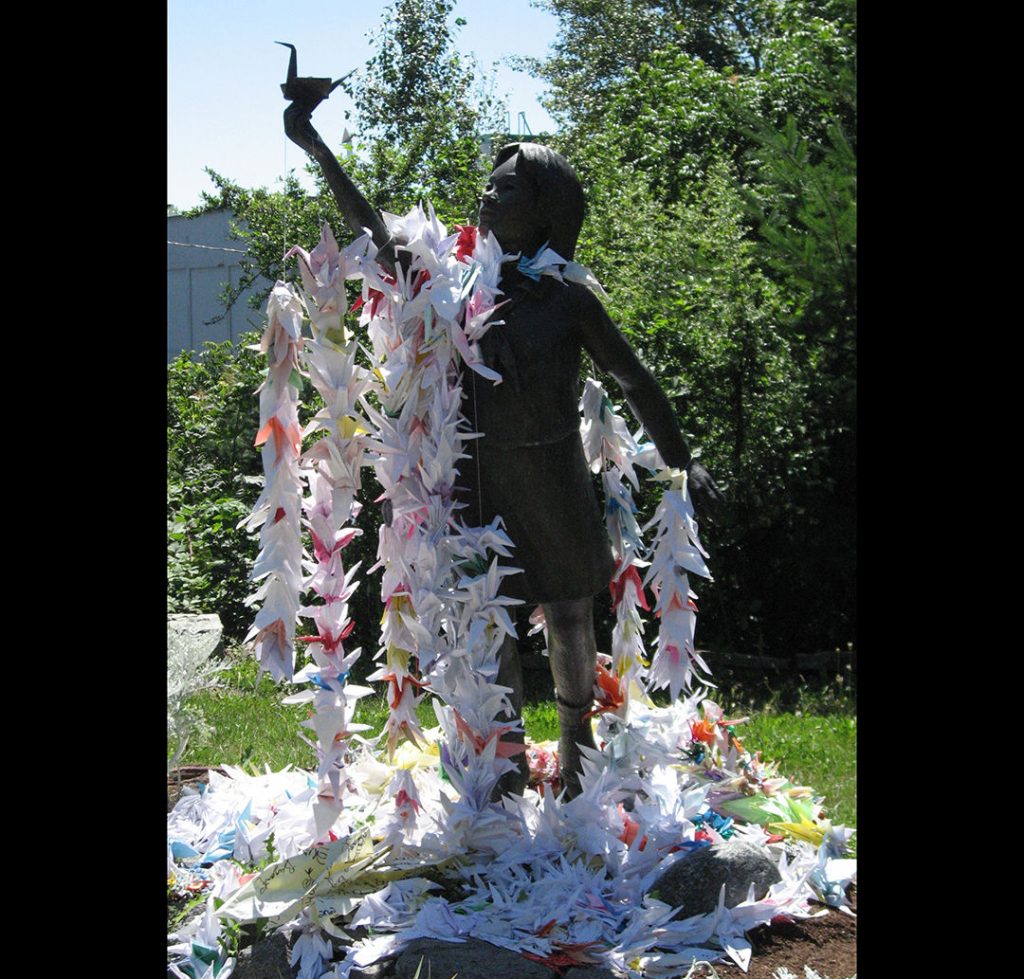Sumiteru Taniguchi was 16 years old. He had just started working as a mail carrier, riding his red bike through the streets of Nagasaki when the atom bomb dropped.
There was a searing flash of light, a mushroom cloud, the feeling of earthquakes. Everything within several kilometers of the blast radius was destroyed. Chaos and fear ensued — homes, businesses and lives were destroyed. Shadows of bodies remained etched in pavement. An estimated 200,000 people died in the attacks on Nagasaki and Hiroshima.
Taniguchi was one of the “hibakusha” (survivors) — literally translated: “explosion-affected people.” There is a famous picture of Taniguchi in the hospital after the bombing, lying on his stomach, grievously burned, skin removed, raw back exposed. He would lie on his stomach for nearly two years in horrible pain.
Although he was treated by multiple doctors, they could not give him adequate medical care and his wounds pained him for the rest of his life. Taniguchi braved on despite his suffering. He showed his scars to the United Nations. He spoke at rallies, remembrances and vigils against nuclear proliferation until he died Aug. 30 at the age of 88.
His story is just one of many “hibakusha” who lived near the hypocenter of the blasts — those alive at the time and those still in their mothers’ wombs. Ravaged by burns, radiation poisoning and cancer, they had to learn how to live in the wake of a kind of destruction that had never been visited before upon any people.
I thought of their stories last week as the United Nations was meeting in New York City, with North Korea launching missiles into the Pacific and threatening its neighbors, and U.S. leaders talking almost matter-of-factly about the possibility of “totally destroying” North Korea in retaliation.
The Catechism of the Catholic Church condemns “every act of war directed to the indiscriminate destruction of whole cities or vast areas with their inhabitants” as “a crime against God and man.”
It was not long ago that it seemed unthinkable that any civilized country would ever again use nuclear weapons. Now, apparently, the unthinkable has suddenly become thinkable again. But if we are going to think such thoughts, it helps to remember the faces of those who survived the last time the bomb was used.
Sumiteru Taniguchi’s story reminds me of another “hibakusha” — Sadako Sasaki. She was two years old when the bomb was dropped on Hiroshima. Sadako developed leukemia from the radiation and at 12 years old was dying. A friend visited her in the hospital and reminded her of a Japanese legend, saying a person who folds 1,000 origami cranes would be granted a wish. Sadako wanted to live. So this young girl began folding. In the months leading up to her death, she would fold 1,400 paper cranes.
After her death, schoolchildren around the world began folding paper cranes in her memory and sent them to the Children’s Peace Memorial in Hiroshima, where a statue stands in her honor. Her cranes rest all over the world today, including at the World Trade Center Memorial and the site of the U.S.S. Arizona.
In the aftermath of the terror attacks of Sept. 11, 2001, the families of the victims fashioned an origami crane from World Trade Center rubble. They sent it as a gift to Japanese families following the Fukushima Daichi power plant nuclear disaster.
St. Pope John Paul II once said, “Peace is not just the absence of war. It involves mutual respect and confidence between peoples. It involves collaboration of binding agreements. Like a cathedral, peace has to be constructed, patiently and with unshakable faith.”
Our country would do well to remember the “hibakusha” of Japan as we confront new nuclear powers. Sadako did not set out to become a recognized figure. She simply wished to live. Taniguchi was delivering the mail and did not know that his life would be permanently altered by nuclear war that fateful day.
Their spirit and commitment to peace across the world personifies a beautiful thirst for humanity. Peace is possible in the human heart. And positive peace can triumph over fear.
Molly Sheahan is projects and program specialist for the Office of Life, Justice and Peace of the Archdiocese of Los Angeles.

